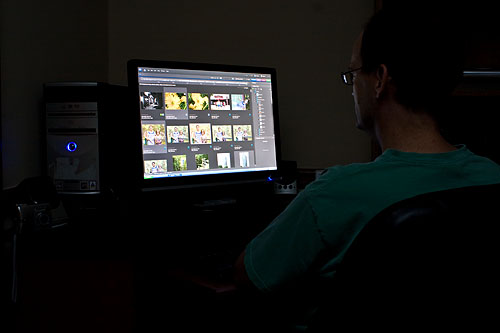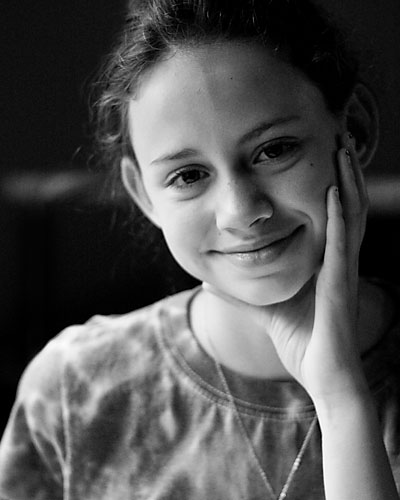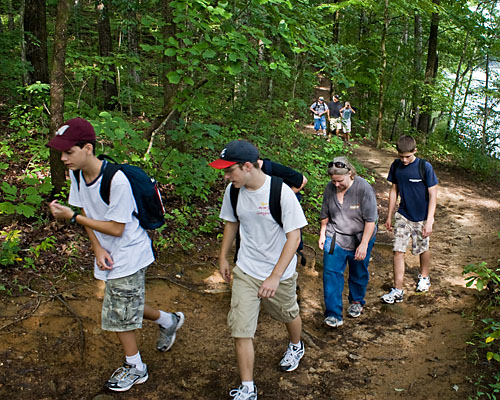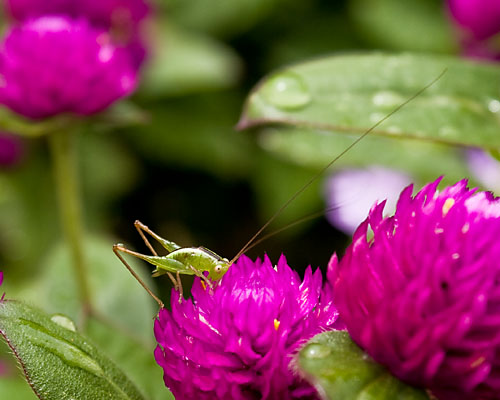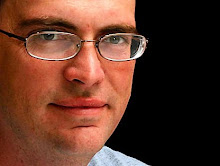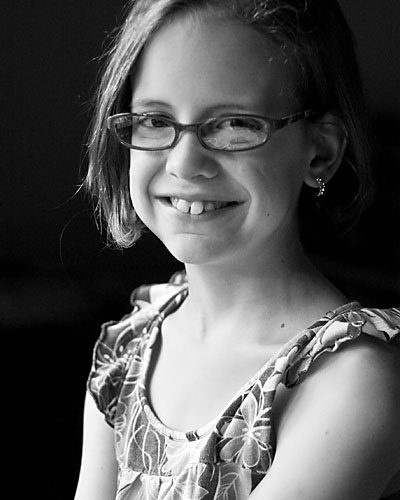
| 1/250 | f2.2 | ISO 1600 | 50mm | RAW |
I had so much success with yesterday's post that I went back and did the same thing with another daughter (in case you don't know, I have five kids &mdash one boy and four girls). And just like the previous post, everything I said about the first photo applies here, too.
Emma remings me so much about myself when I was her age &mdash reserved and quiet at times. But she had seen the photos I had gotten of her sisters and wanted a good one of herself, too. So she really worked with me and made it easier.
While I don't think her expression is quite as precocious as Tannah's, I love it anyway. I feel like she is exchanging a knowing smile with me, like she knows what I am thinking and she agrees.
If you can capture expressions in your subjects that convey a feeling to the viewer, then you are doing a great job with your photography. It's something hard to do, and there will be times that you start to feel like you're doing it, and then you go for a long time without any luck (it's what makes quality photography such a joy to acheive).
If this happens to you, don't despair. Just keep clicking away.
As for what I wish I could change, I shot this too loose and had to crop this in quite a bit to get the composition you see. As you know, my wife wants an 8x10 of each child, and I worry that I had to crop in too much to get a good 8x10 out of this.

